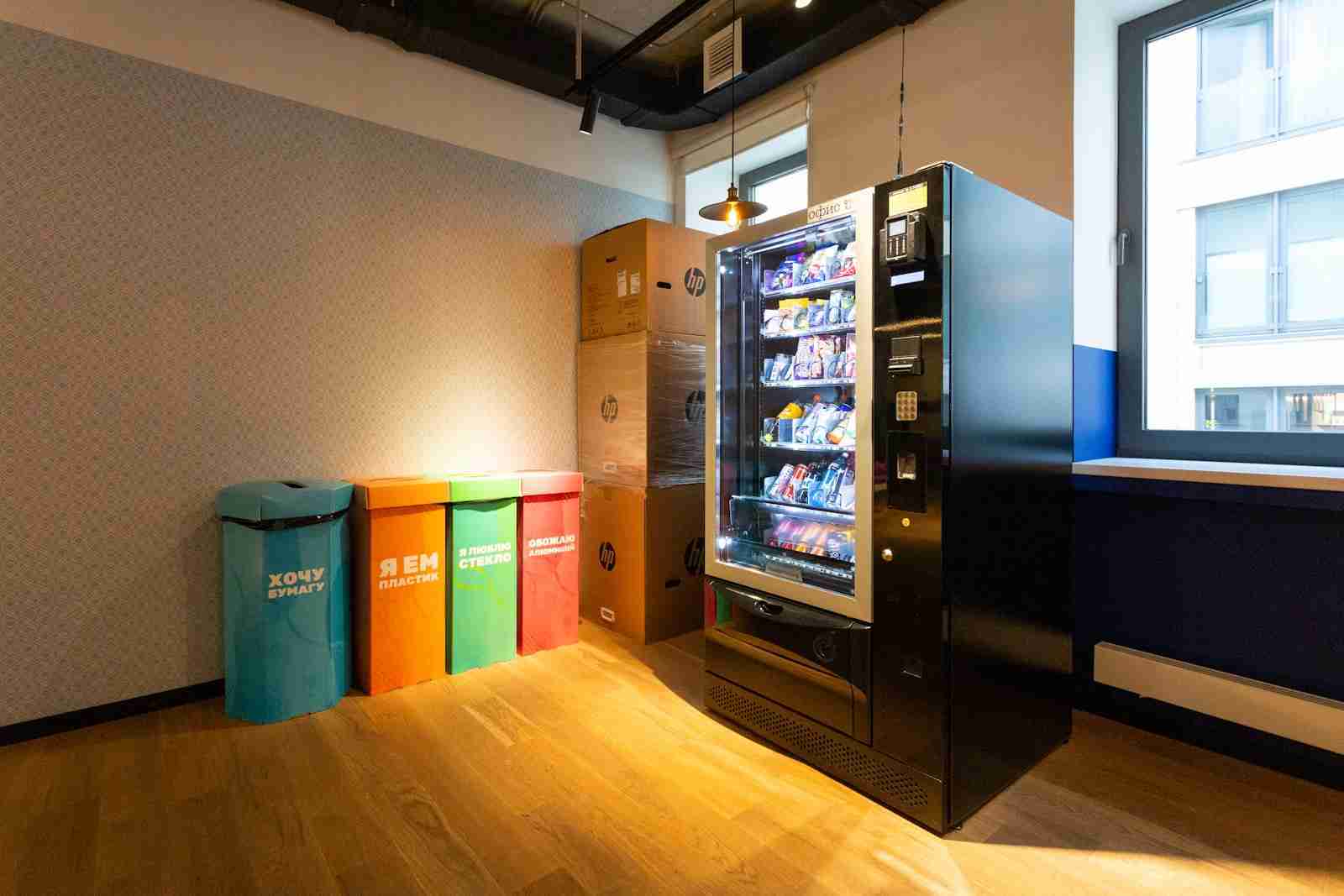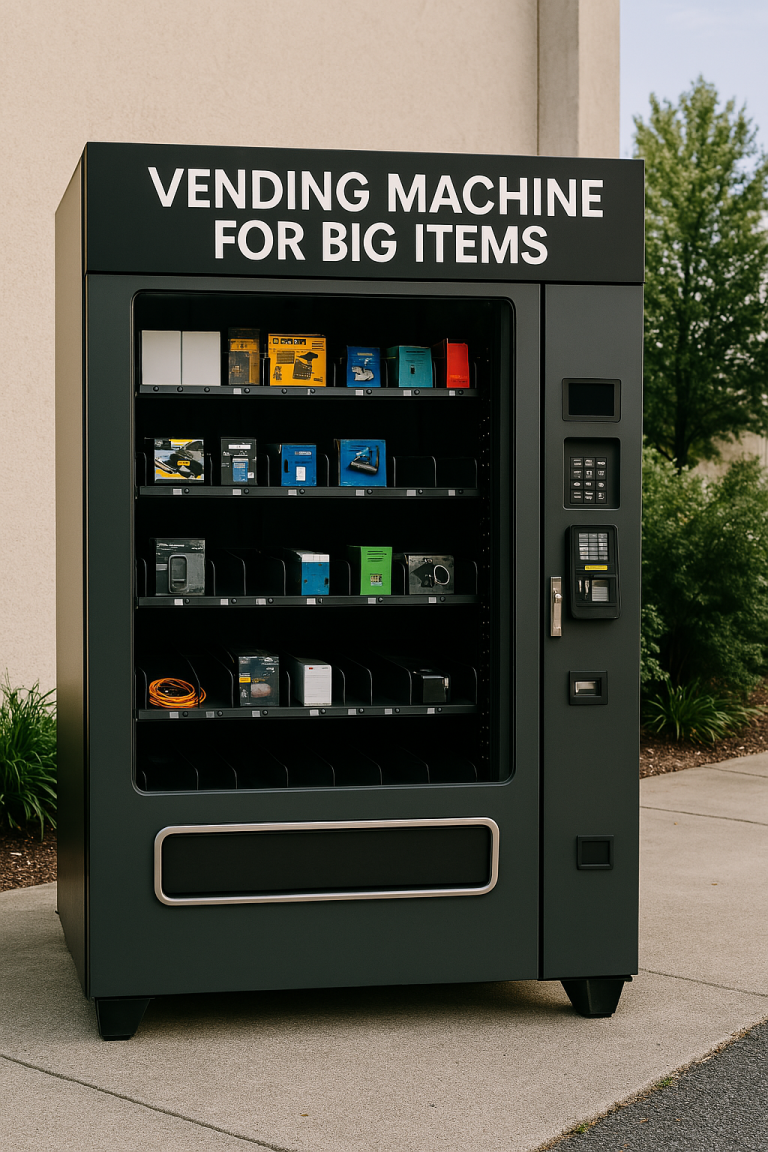Our vending machines are built to order with a 45-60 day lead time. Flexible Financing Options available starting at less than $100/mo. Apply for Financing
Vending Machines in Schools: Benefits, Convenience, and Healthy Choices

Vending machines have long been staples in workplaces, gyms, and public areas, but their role in schools has evolved significantly in recent years. No longer just a source of sugary snacks and sodas, vending machines in schools now prioritize convenience, nutrition, and accessibility. With the right products and placement, these machines offer more than just quick bites—they enhance the overall school experience for students, teachers, and staff.
In this article, we’ll explore the benefits of installing vending machines in schools, showing how they contribute to a healthier, more efficient learning environment.
Promotes Convenience for Students and Staff
Time is precious in schools, where structured schedules leave little room for extended breaks. A vending machine can save the day, offering easy access to snacks, drinks, and even essential items like stationery or hygiene products.
For Students
- Quick Energy Boosts: Students often have long days filled with classes, sports, and extracurricular activities. A vending machine provides quick access to energy-boosting snacks, ensuring they stay fueled and focused throughout the day.
- Accessible During Breaks: With limited time during lunch or recess, vending machines make it easy to grab something quickly without standing in long cafeteria lines.
For Teachers and Staff
- On-the-Go Refreshments: Teachers juggling classes, meetings, and grading can rely on vending machines for quick coffee, snacks, or beverages during their busy schedules.
- After-Hours Access: For staff staying late for events, meetings, or preparation, vending machines provide a reliable option for refreshments when other facilities are closed.
Encourages Healthier Choices
Gone are the days when school vending machines were packed with only chips and sodas. Today, there’s a strong push toward stocking healthier options that align with nutritional standards.
Nutritional Benefits
- Healthy Snacks: Schools can partner with vending machine providers to include items like granola bars, trail mix, yogurt, or fresh fruit cups.
- Sugar-Free Beverages: Offering water, sparkling water, or low-sugar juices helps promote healthier hydration habits.
- Allergy-Friendly Options: Machines can cater to students with dietary restrictions by including gluten-free, nut-free, or vegan snacks.
Meeting Regulations
- Many schools are required to follow guidelines like the USDA’s Smart Snacks in School Standards, which promote nutritious options. A vending machine stocked with compliant products ensures schools meet these standards while still offering variety and convenience.
Supports a Revenue Stream for the School
One of the most appealing benefits of vending machines in schools is their ability to generate revenue. By partnering with a reliable vending machine provider, schools can turn their machines into a source of passive income.
How It Works
- Revenue Sharing: Vending machine operators often offer schools a share of the profits generated from sales. The more frequently the machines are used, the higher the earnings.
- Fundraising Opportunities: Revenue from vending machines can be reinvested into school programs, such as sports teams, arts, or academic resources.
- Low Maintenance: Operators typically handle stocking, repairs, and maintenance, meaning schools can benefit financially without additional workload.
Examples of Use
- Funds generated from vending machines can help support extracurricular activities, purchase new equipment, or subsidize events like field trips.
Reduces Operational Burden on Cafeterias
Cafeterias in schools often face challenges like long lines, limited staffing, and the need to prepare meals for hundreds of students daily. Vending machines act as an efficient supplement to cafeteria services.
Benefits for Cafeterias
- Eases Lunchtime Rush: With vending machines offering grab-and-go options, cafeterias can focus on serving full meals without being overwhelmed by snack-seeking students.
- Extended Availability: Vending machines provide snacks and drinks during off-hours when cafeterias are closed, ensuring students and staff always have access to refreshments.
- Supports Nutritional Variety: Machines can complement cafeteria menus by offering items not typically served, such as protein shakes, smoothie packs, or specialty snacks.
Improved Efficiency
By balancing the load between cafeteria services and vending machines, schools can streamline operations and improve the overall dining experience for students and staff.
Enhances the Learning Environment
Proper nutrition enhances academic performance, boosts concentration, and improves well-being. Vending machines stocked with thoughtful, healthy options can play a vital role in enhancing the learning environment.
Boosts Focus and Productivity
- Energy for the Day: A quick snack between classes or during breaks ensures students have the energy they need to stay attentive in the classroom.
- Supports Extracurricular Activities: Students participating in after-school programs or sports benefit from convenient access to snacks and drinks that fuel their performance.
Promotes Independence and Responsibility
- Learning Money Management: For younger students, using a vending machine provides an opportunity to practice handling money or managing allowances.
- Encouraging Smart Choices: With healthier products, students learn to make more nutritious decisions, building habits that extend beyond school life.
Positive School Culture
- A well-placed vending machine becomes a hub where students and staff can grab refreshments, fostering a sense of community and convenience within the school.
Tips for Successfully Installing Vending Machines in Schools
To maximize the benefits of vending machines, schools should consider the following tips:
1. Partner with a Reliable Provider
Choose a vending company that specializes in schools and understands nutritional guidelines. Providers should offer flexible product options, regular restocking, and reliable maintenance.
2. Prioritize Healthy Products
Work with the vending operator to curate a selection of snacks and drinks that align with the school’s wellness goals. Consider conducting surveys to understand what students and staff want most.
3. Choose High-Traffic Locations
Place vending machines in areas with maximum visibility and accessibility, such as hallways near the cafeteria, gymnasiums, or teacher lounges.
4. Monitor Performance
Regularly review sales data and gather feedback from students and staff to ensure the vending machine is meeting their needs. Adjust the product selection if certain items are under performing.
Conclusion
Installing vending machines in schools offers a range of benefits, from providing convenient access to snacks and drinks to promoting healthier eating habits. They support school operations by easing the burden on cafeterias, generating revenue for valuable programs, and enhancing the overall learning environment. With thoughtful placement, the right products, and a trusted vending partner, schools can turn these machines into assets that benefit both students and staff.
By embracing vending machines as tools for convenience and nutrition, schools can create a more dynamic and supportive space for learning, growth, and community. It’s a simple yet impactful addition that offers long-term advantages for everyone involved.



